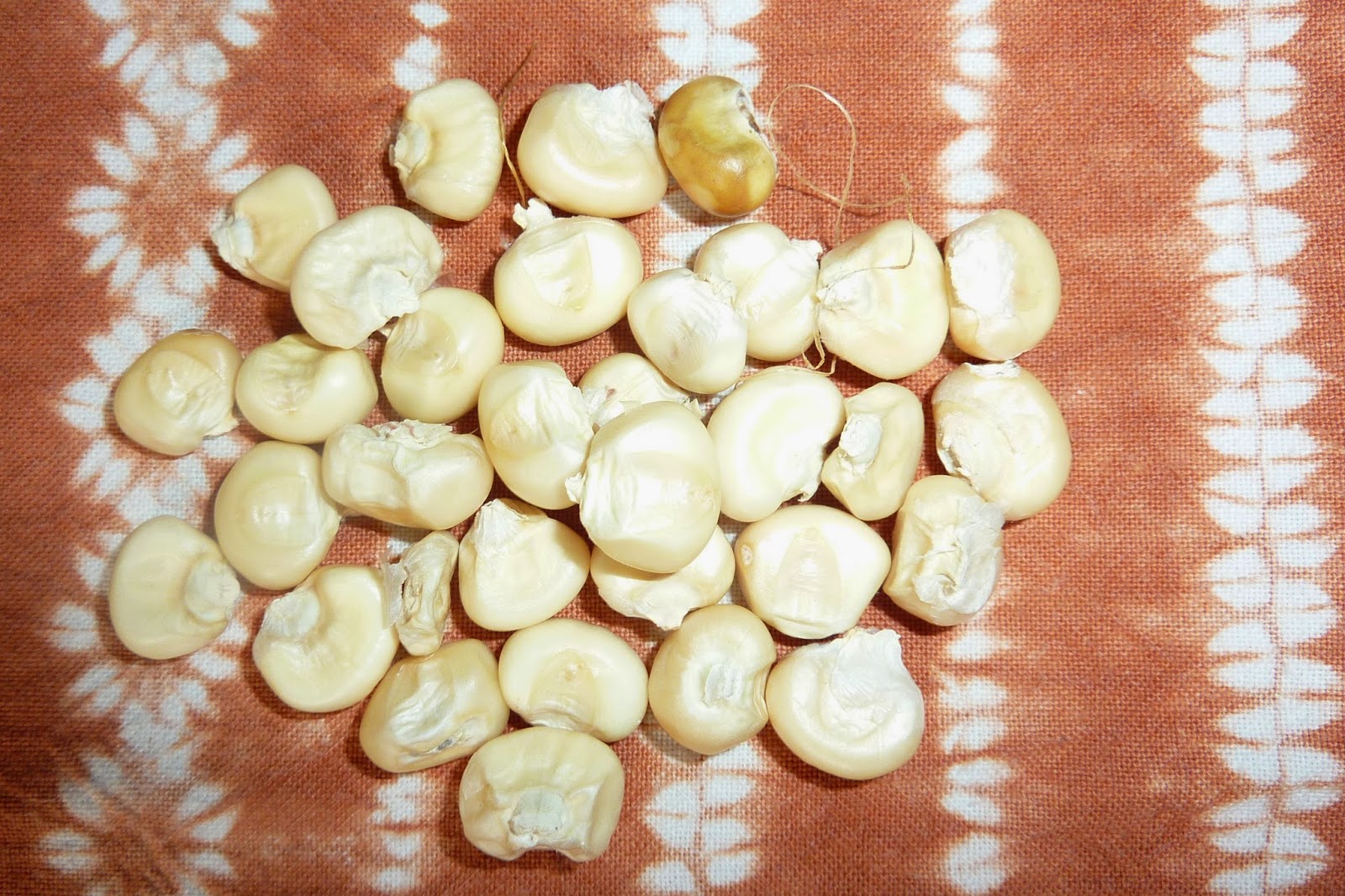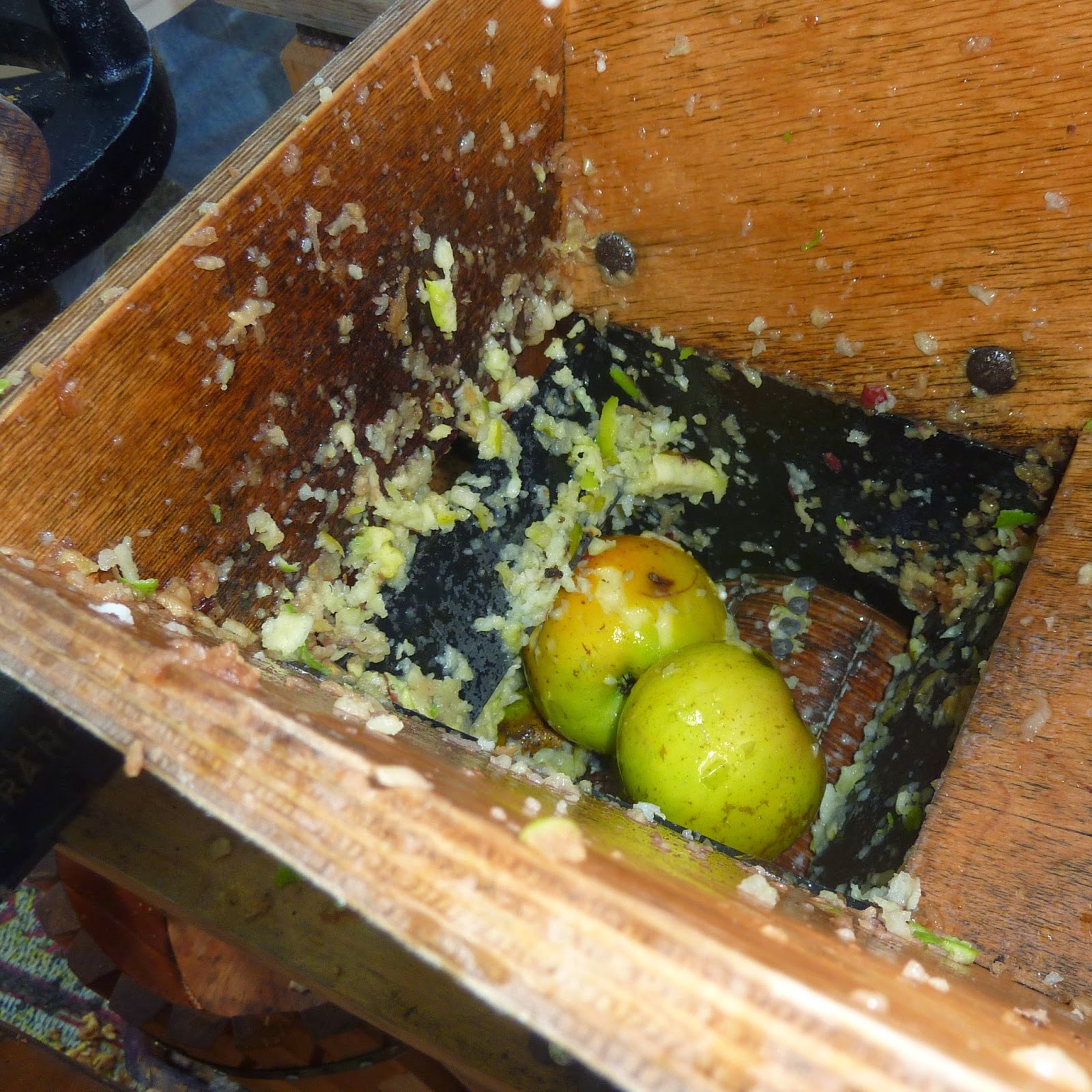I had already harvested all of our Newtown Pippin apples from our tree which was not looking very robust. She has since had much love and care earlier in this Fall so perhaps she will be happier next year and produce her usual abundance of apples. Dwight made arrangements for picking Arkansas Black and Granny Smith apples at our neighbor Ruby's property. Ruby had already pressed 10 gallons (yes! gallons!) from her early apples so she was very happy to share her late apples. With all three varietes we had a goodly amount of apples which we loaded up in our car, along with Shasta, of course, and off to Luther Burbank's Experiment Farm in Sebastopol.
Sharing the process of BEing Rooted initially at Refuge; transplanting to Santa Fe, NM and reRooting, then back to California and reRooting in Cotati.
Monday, November 3, 2014
Apples, Apples, Apples Then There Was Juice
Slow Food operated a community apple press at Luther Burbank's Experiment Farm in Sebastopol where residents and visitors could bring apples and, for free, make fresh apple juice. Dwight, Katie and I spent part of one Sunday afternoon this month past doing just that. None of us had pressed apples before so it was a wonderful sunny and warm afternoon filled with a new and fun experience.
I had already harvested all of our Newtown Pippin apples from our tree which was not looking very robust. She has since had much love and care earlier in this Fall so perhaps she will be happier next year and produce her usual abundance of apples. Dwight made arrangements for picking Arkansas Black and Granny Smith apples at our neighbor Ruby's property. Ruby had already pressed 10 gallons (yes! gallons!) from her early apples so she was very happy to share her late apples. With all three varietes we had a goodly amount of apples which we loaded up in our car, along with Shasta, of course, and off to Luther Burbank's Experiment Farm in Sebastopol.
I had already harvested all of our Newtown Pippin apples from our tree which was not looking very robust. She has since had much love and care earlier in this Fall so perhaps she will be happier next year and produce her usual abundance of apples. Dwight made arrangements for picking Arkansas Black and Granny Smith apples at our neighbor Ruby's property. Ruby had already pressed 10 gallons (yes! gallons!) from her early apples so she was very happy to share her late apples. With all three varietes we had a goodly amount of apples which we loaded up in our car, along with Shasta, of course, and off to Luther Burbank's Experiment Farm in Sebastopol.
The Three Sisters
A few weeks past I was blessed with the opportunity to join in celebration of women's indigenous knowledge. One of the Bioneers pre-conference intensives, "Three Sisters Farming: Indigenous women, plants, and foodways," happened at the Indian Valley Organic Farm and Garden, College of Marin in Novato, California. This historic workshop was presented by the Cultural Conservancy and Bioneers Indigenous Knowledge Program.
I must admit right up front that what drew me to send in my money was Robin Kimmerer, author of Braiding Sweetgrass (2013) and Gathering Moss (2003), since I missed her at Point Reyes Bookstore. Her books touched my restorative gardener soul and native habitat heart. She did not disappoint with her reading of "The Three Sisters" from her latest book. She is such an awesome storyteller of what really matters.
You may wonder who are the Three Sisters?
 |
| Corn, the ancient grain, ground for flour by natives peoples. This is not our corn on the cob version, rather it is harvested when the kernels are completely dry. These are a few kernels from the actual corn we harvested at the garden in Novato which was planted by Kaylene Bray's father earlier in the season. |
"For millennia, from Mexico to Montana, women have mounded up the
earth and laid these three seeds in the ground, all in the same
square foot of soil. When the colonist on the Massachusetts shore
first saw indigenous gardens, they inferred that the savages
did not know how to farm. To their minds, a garden meant straight
rows of single species, not a three dimensional sprawl of abundance.
And yet they ate their fill and asked for more, and more again." from Braided Sweetgrass
Since Robin Kimmerer is not only a Citizen Potawatomi Nation member but a botanist as well, she goes on in "The Three Sisters" chapter with great detail about how these three plants not only coexist but how they benefit one another as well. WOW! Indigenous companion planting, now that is just so exciting to me!
There were a number of women who participated, each bringing a wonderful teaching from her indigenous place. And the experience in the garden, although it was planted in rows (even the tepary beans) except the three sisters, was full of energetic interconnectedness. Here I was introduced to tepary beans which I had not heard of, but having lived in Tucson, I was familiar with the Tohono O’odham who are growing them today. These native peoples, eating the American diet of fast food, suffer from an epidemic of diabetes and all its complications. They rediscovered this bean which had been a staple of their ancestors. The plant is unlike other bean plants in that it is able to soak up the monsoonal rains, store the water in its roots and meter the release so that the plant survives through the heat and dryness so often a part of the desert during the growing season. Researchers have found this bean rates low on the Glycemic Index. These native people relate that the way this bean controls insulin release merely mimics how the plant itself releases water. The native peoples returning to eating the way of their ancestors are finding diabetes diminishing in those returning to that way of eating.
Here's two of the women who spoke to me:
There were a number of women who participated, each bringing a wonderful teaching from her indigenous place. And the experience in the garden, although it was planted in rows (even the tepary beans) except the three sisters, was full of energetic interconnectedness. Here I was introduced to tepary beans which I had not heard of, but having lived in Tucson, I was familiar with the Tohono O’odham who are growing them today. These native peoples, eating the American diet of fast food, suffer from an epidemic of diabetes and all its complications. They rediscovered this bean which had been a staple of their ancestors. The plant is unlike other bean plants in that it is able to soak up the monsoonal rains, store the water in its roots and meter the release so that the plant survives through the heat and dryness so often a part of the desert during the growing season. Researchers have found this bean rates low on the Glycemic Index. These native people relate that the way this bean controls insulin release merely mimics how the plant itself releases water. The native peoples returning to eating the way of their ancestors are finding diabetes diminishing in those returning to that way of eating.
Here's two of the women who spoke to me:
Roxanne Swentzell, founder of Flowering Tree Permaculture at her home in Santa Clara Pueblo, shared her video of her study in which her peoples returned to eating as her grandparents and great grandparents ate. Just like the Tohono O’odham found with the tepary bean, the three month long study described in the video showed a remarkable healing of the participants. The weight loss varied among them from 25 to almost 50 pounds, laboratory values returning to "normal" limits, the return of vibrant energy for enjoying daily life, and as one of the youngsters discovered, "McDonald's is poison to my body." Roxanne shared that this way of eating is a diet rather "cultural preservation". She is also a talented sculptor and her work is showcased at the Tower Gallery. Dwight, a sculptor himself, has viewed much of her work on the web.
Sage LaPena, a Wintu and the Water Resource Coordinator at California'a Hopland Pomo Tribal EPA, shared a minuscule bit of her plant knowledge. Judith Larner writes in Gardening with a Wild Heart of Sage's learning and knowledge. Her passion for bringing healing and wholeness to her native people through reconnection with ancient ways brought tears not only to my eyes but to many eyes in the audience gathered beneath the old oak tree.
As you consider planting the three sisters in your garden for sumptuous food, may you
Subscribe to:
Comments (Atom)














